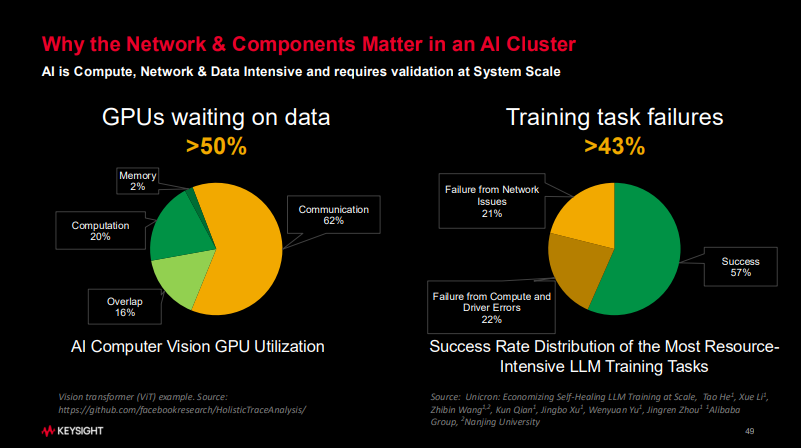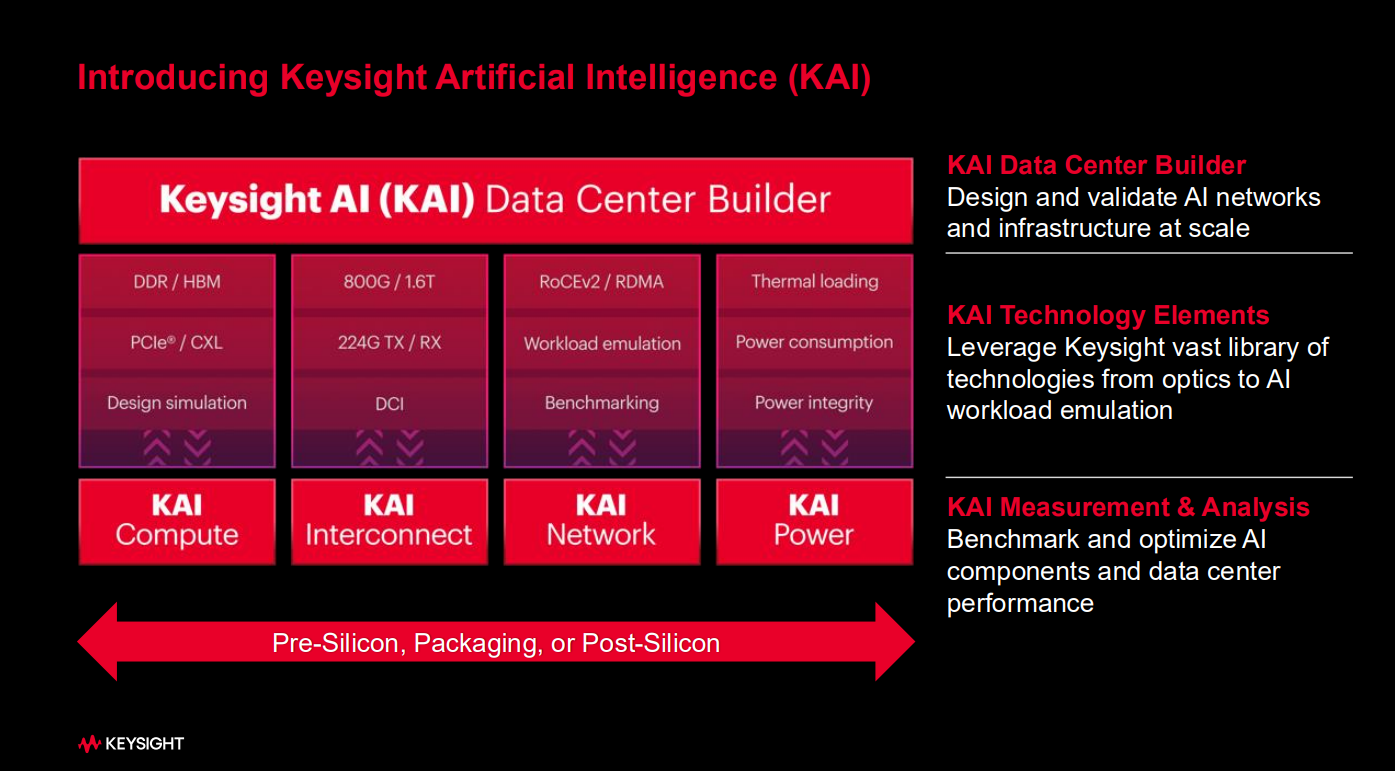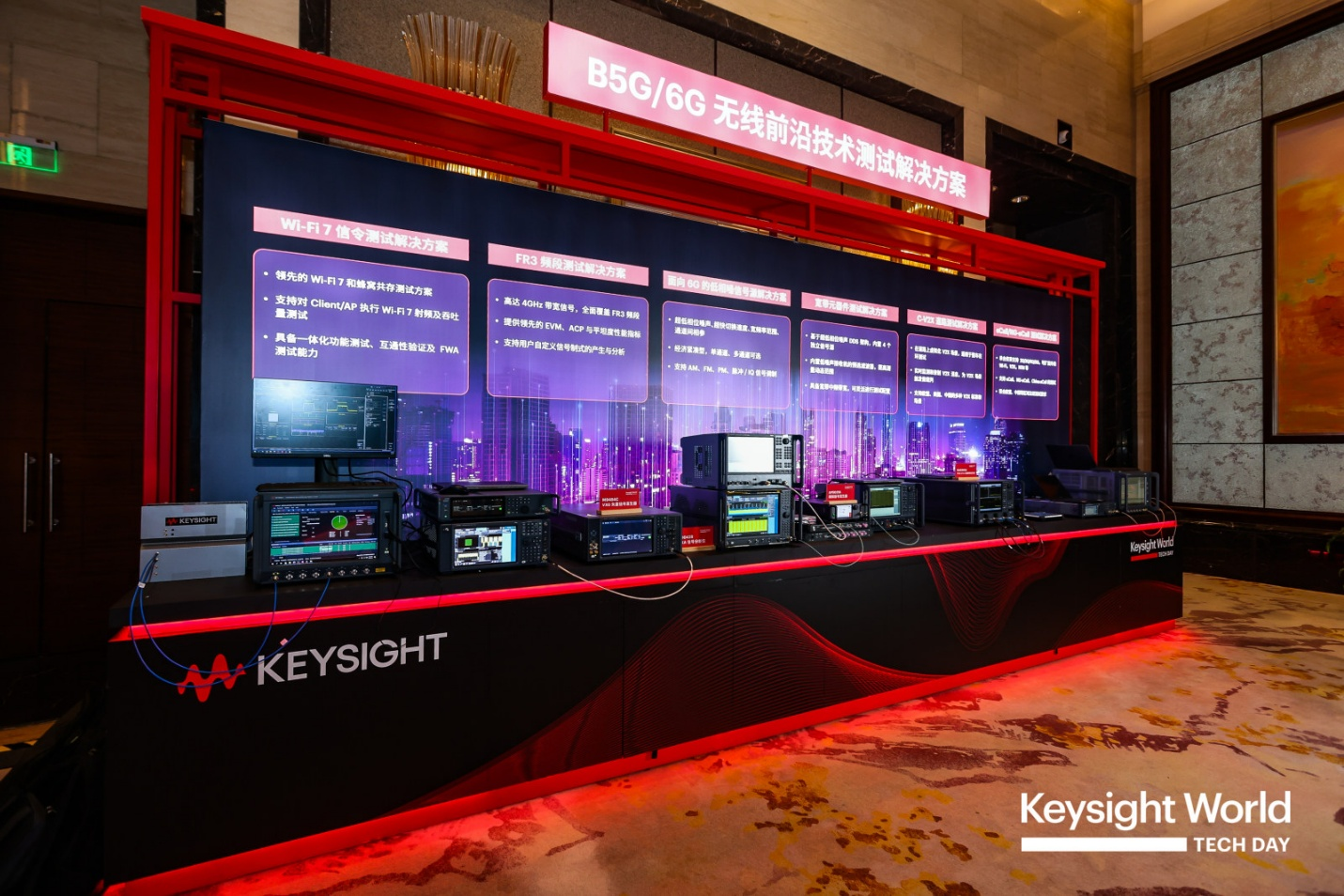Bloomberg data shows that the global AI market size was approximately $86.9 billion in 2022 and is expected to rise to $1.3 trillion by 2030. This figure was shared by Keysight Technologies during the Keysight World Tech Day 2025 media communication event held in Shanghai on June 26. As a significant technology gathering, this year's event featured a summit and three parallel forums focusing on 'AI-Driven Ultra-High-Speed Transmission Testing,' 'B5G/6G Wireless Frontier Technologies and Testing,' and 'Comprehensive Chip Testing from Power to AI,' providing a high-end platform for industry discussions on the latest trends and cutting-edge technologies. When asked why AI and B5G/6G were chosen as the focus of this year's conference, Marie Hattar, Senior Vice President and Chief Marketing Officer of Keysight Technologies, stated that 'the three areas of 6G, AI, and IC hold tremendous growth potential.' These technologies are currently undergoing upgrades and require advanced testing and measurement solutions. As a long-established player in the testing and measurement field, Keysight Technologies aims to collaborate deeply with the industry and actively participate in solution development and industry standard formulation.
AI is not a new concept; however, today's discussions often center around generative AI. Early AI focused primarily on pattern recognition, which was unidirectional and required relatively lower computing power, parameters, and data scale. In contrast, generative AI requires larger models to ensure the accuracy of the generated content. Consequently, today's AI model parameters have soared to trillions of levels, with computing clusters evolving to tens of thousands of computing cards. The cost of such computing power is significant; building a truly effective data center can require investments of hundreds of millions, including GPUs, CPUs, TPUs, storage devices, and various active and passive cables. Data shows that GPUs are not always fully utilized, with waiting times exceeding 50% during model training. Analyzing further, it appears that during training, computational time accounts for 20%, overlap time for 16%, and memory time for 2%, with the remaining 62% being idle. The underlying issue is that GPUs cannot perform calculations without data.
Li Jian, Manager of the High-Speed Digital Market at Keysight Technologies in Greater China, explained that data exchange and transmission face various obstacles, similar to getting stuck in traffic on the way to work, causing delays. Additionally, the reliability of data centers is compromised by frequent failures, with successful completion rates for training tasks only around 57% due to hardware or software malfunctions. Today's large AI models require substantial computing power, big data, and high bandwidth, which can strain components operating in high temperatures and continuously under load, leading to potential breakdowns that might halt the entire system. Without specific measures such as checkpoint protection and restart capabilities, previously invested training time and data can be lost.
In response to these challenges, Keysight Technologies has redefined its AI product matrix under the unified name Keysight AI (KAI) and segmented it into four main areas: KAI High-Speed Computing, KAI Interconnect, KAI Network, and KAI Energy Efficiency. This encompasses a range of solutions to support the full lifecycle of user products, including physical layer verification and application layer testing.
At the recent Optical Networking and Communication Conference and Exhibition (OFC) in March-April, Keysight Technologies launched three new products targeting the physical, network, and application layers. These include the DCA-M sampling oscilloscope capable of 224G single and dual-channel sampling, interconnect and network performance testing equipment with rates up to 1.6T, and the KAI Data Center Builder that simulates various traffic scenarios within a real network environment.
In terms of 6G evolution, Keysight's Wireless Market Manager Bai Ying emphasized that 6G is not about creating a completely new network to replace 5G, as the global rollout of 5G is still incomplete. Instead, it requires innovation through inheritance. He pointed out the need to address what consumers and businesses can gain from 6G and how it can improve user experiences and reduce costs. Keysight Technologies continues to closely follow industry standards, aspiring to contribute to standardization efforts. By leveraging software technology, Keysight can achieve automated smart testing, a facet of AI. For instance, in Madagascar, Keysight collaborated with operators to create a virtual digital twin based on geographic information, allowing for site selection without the need for physical surveys.
At the Keysight World Tech Day, innovations in wireless technology for B5G/6G were showcased, including the FR3 frequency band testing solution, low phase noise signal sources for 6G applications, and Wi-Fi 7 signaling test solutions.
Keysight Technology Highlights AI and B5G/6G Potential at Tech Day 2025

Images



Share this post on: